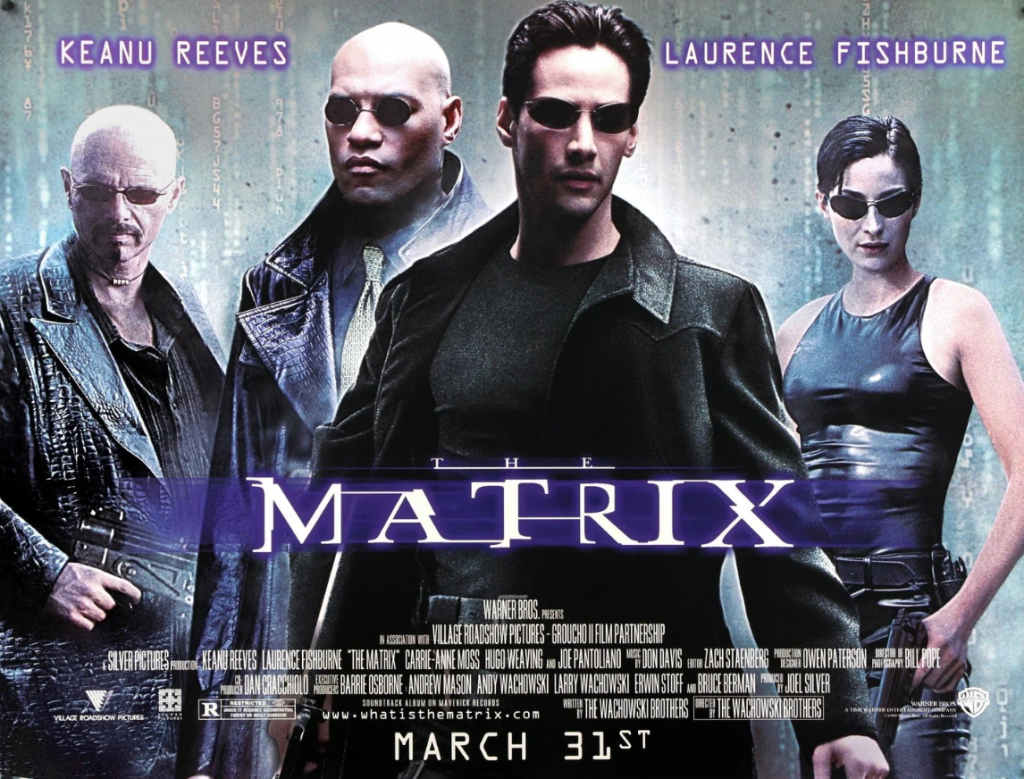
Released in 1999, “The Matrix,” directed by the Wachowskis, remains a groundbreaking masterpiece that revolutionized the sci-fi genre and cinematography. This film has etched itself into cinematic history with its innovative storytelling, mind-bending visuals, and philosophical depth.
The narrative follows Thomas Anderson, played by Keanu Reeves, a computer programmer who leads a double life as a hacker known as Neo. He discovers the truth about reality that the world he inhabits is an elaborate simulation, the Matrix, designed to keep humanity dormant while machines use their bodies as an energy source.
From the opening sequence, “The Matrix” immerses viewers in a world of unparalleled visual grandeur and technological wizardry. The iconic bullet-dodging scene, with its groundbreaking “bullet time” effect, redefined action sequences and set a new standard for visual effects in filmmaking.
Keanu Reeves delivers a compelling performance as Neo, transitioning from a curious and disillusioned individual to the iconic savior figure with a sense of purpose and determination. His portrayal captures the essence of a reluctant hero on a journey of self-discovery and awakening.
The supporting cast, including Laurence Fishburne as the enigmatic Morpheus, Carrie-Anne Moss as the formidable Trinity, and Hugo Weaving as the menacing Agent Smith, contributes immensely to the film’s depth and intensity. Each character adds layers to the narrative, enhancing the film’s philosophical undertones.
Beneath its adrenaline-pumping action sequences lies a profound exploration of existential and philosophical themes. “The Matrix” explores the nature of reality, free will, and the human condition, prompting viewers to question their perceptions of the world. The movie cleverly intertwines Eastern philosophy, cyberpunk elements, and religious allegories, inviting contemplation on the complexities of existence.
The visual aesthetics of “The Matrix” are nothing short of mesmerizing. The juxtaposition of the grim, dystopian reality with the sleek, technologically advanced Matrix creates a stark contrast that underscores the film’s themes. The use of green-tinted hues to signify the digital world and gritty, desaturated tones for the real world reinforces this dichotomy.
Moreover, the film’s action choreography, a fusion of martial arts and innovative camera work, remains unparalleled. Each fight sequence is a symphony of athleticism and visual prowess, elevating the film’s entertainment value while serving the narrative’s purpose.
While “The Matrix” received universal acclaim, some critics argue that its sequels did not live up to the original’s brilliance. The complex philosophical concepts introduced in the first film might have become convoluted in subsequent installments, losing some of the initial clarity and impact.
In conclusion, “The Matrix” is a cinematic triumph—a masterpiece that continues to resonate with audiences, leaving an unforgettable mark on popular culture. Its blend of thought-provoking narrative, groundbreaking visuals, and philosophical depth cements its place as a timeless classic, inviting viewers to ponder the very nature of reality and the power of human consciousness.
Works Cited
Gaeta, John. Designer of The Matrix Theatrical Release Poster. 1999.
